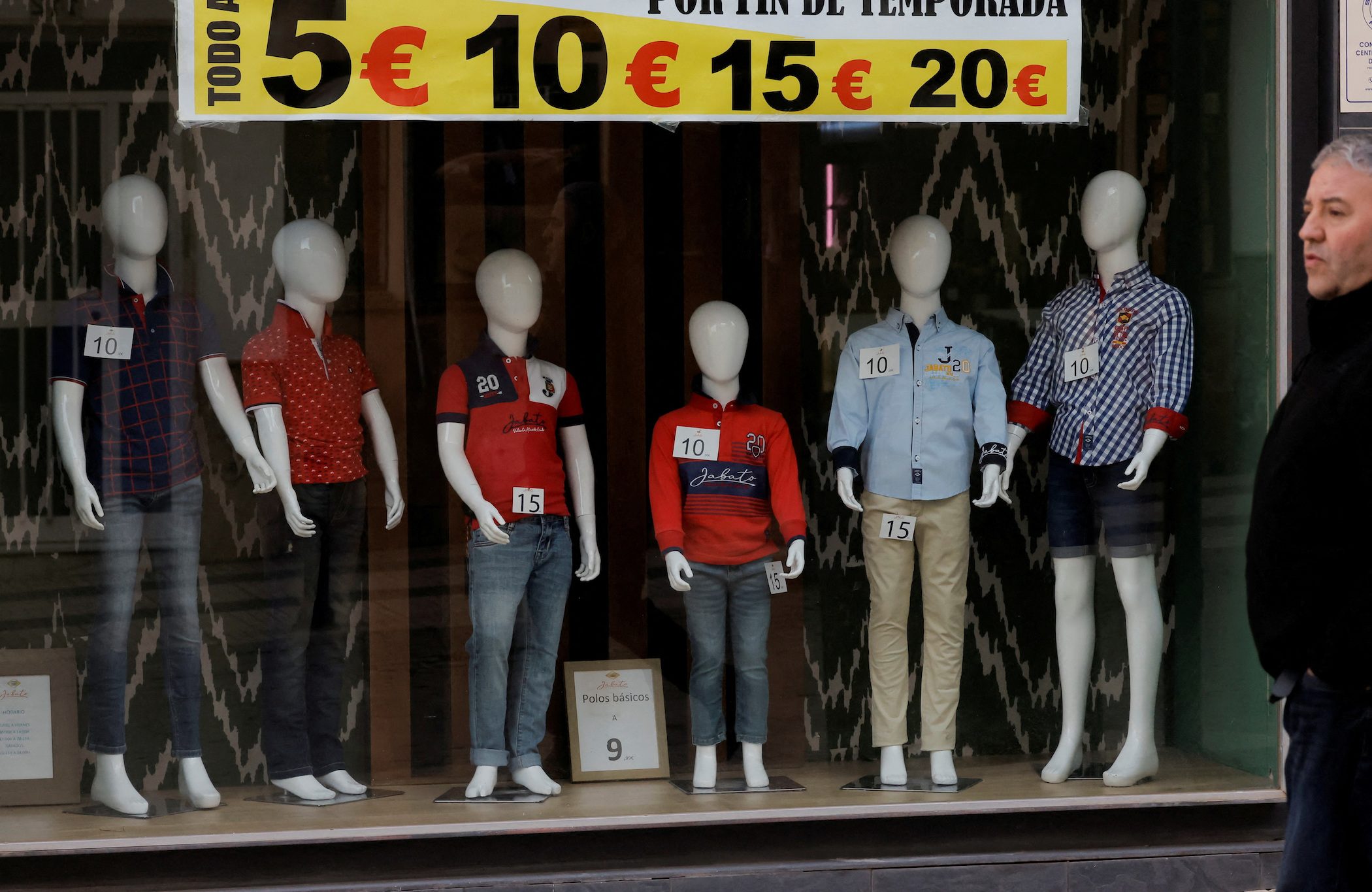SUMMARY
This is AI generated summarization, which may have errors. For context, always refer to the full article.

FRANKFURT, Germany – The eurozone eked out growth in the final three months of 2022, managing to avoid a recession even as sky-high energy costs, waning confidence, and rising interest rates took a toll on the economy that is likely to persist into this year.
Gross domestic product (GDP) across the currency bloc expanded by a tiny 0.1% in the fourth quarter, data from Eurostat showed on Tuesday, January 31, outperforming expectations in a Reuters poll for a 0.1% drop. Compared to a year earlier, growth was 1.9%, just beating expectations of 1.8%.
Among the biggest eurozone countries, Germany and Italy recorded negative growth rates for the quarter but France and Spain expanded, Eurostat added, based on a flash estimate that is subject to revisions.
Russia’s nearly year-old war in Ukraine has proved costly for the eurozone, which now spans 350 million people in 20 countries, given some members’ heavy reliance on cheap energy.
Surging oil and gas prices have depleted savings and held back investment, while forcing the European Central Bank (ECB) into unprecedented rate hikes to arrest inflation.
But the economy has displayed some unexpected resilience, too – much like during the COVID-19 pandemic, when growth outperformed expectations as businesses adjusted faster to changed circumstances than policymakers had predicted.
More recent figures like a crucial confidence indicator or the latest purchasing managers’ index data suggest growth may have hit bottom already and a slow recovery is underway, helped by generous government support and a mild winter that has limited energy spending.
The overall picture nevertheless remains weak, with meager growth forecast for 2023 due to a large drop in real incomes and surging interest rates.
“The headline GDP figure gives a misleadingly favorable impression of economic conditions in late 2022,” said Ken Wattret, an analyst at S&P Global Market Intelligence.
“The key takeaway from member states’ data is the breadth of weakness in private consumption, with the acute squeeze on household real incomes due to soaring inflation belatedly biting.”
Ireland’s 3.5% Q4 growth figure distorted the overall picture as it was driven largely by activity among big foreign companies based there for tax reasons, economists said, adding that without Ireland, eurozone growth would have been zero.
The ECB has raised rates by a combined 2.5 percentage points to 2% since July to tame inflation, and markets see another 1.5 percentage points of increases by midyear, which would put the deposit rate at its highest level since the turn of the century.
Such a rapid increase is putting a brake on bank lending, a key source of credit for businesses, and access to loans has already suffered the biggest drop last quarter since the bloc’s 2011 debt crisis.
“In the coming months, the noticeable tightening of monetary policy will increasingly slow down the economy,” Commerzbank economist Christoph Weil said.
“We continue to expect the euro area economy to contract slightly in the first half of the year, and the recovery expected in the second half is likely to be weak.” – Rappler.com
Add a comment
How does this make you feel?





There are no comments yet. Add your comment to start the conversation.